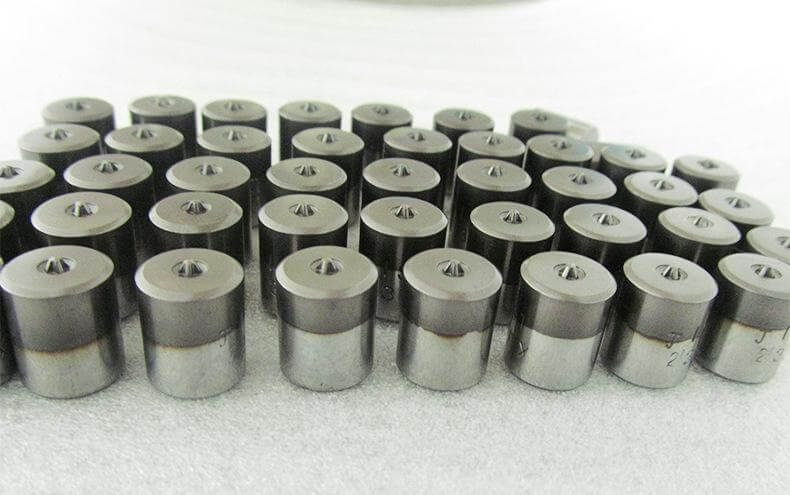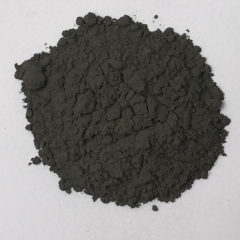Professional industry ceramic supplier, silicon nitride, silicon carbide, aluminum nitride and any other kinds of ceramics.
Overview of titanium carbide TiC powder
Titanium carbide TiC powder is a crystalline solid with gray metallic luster, hard texture, hardness second only to diamond, and weak magnetism. The molecular weight is 59.89, the melting point is 3140°C, the boiling point is 4820°C, the relative density is 4.93, and the hardness is 9-10. Insoluble in water, soluble in nitric acid and aqua regia. It is stable to air below 800℃, and corroded by air above 2000℃, at 1150℃. Used in the manufacture of cemented carbide, also used as electrodes and abrasives for arc lamps.
TiC is light gray, cubic crystal system, insoluble in water, high chemical stability, hardly reacts with hydrochloric acid and sulfuric acid, but soluble in aqua regia, nitric acid and hydrofluoric acid, and also soluble in alkaline oxidizing solutions.

TiC is an iron gray crystal with metallic luster. It belongs to the simple cubic structure of NaCl type. The lattice constant is 0.4329 nm. The space group of Fm3m. The carbon atoms and titanium atoms between TiC correspond to strong covalent bonds at the lattice positions. Bonded atoms, it has a variety of properties similar to metals, such as high melting point, high boiling point and hardness, hardness is second only to diamond, good thermal and electrical conductivity, even at extremely low temperatures also show superconductivity. Therefore, TiC is widely used in the manufacture of high-temperature vacuum equipment such as cermets, heat-resistant alloys, hard alloys, anti-wear materials, and high-temperature radiation materials.

Synthesis method of titanium carbide
Titanium dioxide and carbon black as raw materials:
The high-purity titanium dioxide and carbon black are fully mixed in proportion, and a horizontal carbon tube furnace or a vertical carbon tube furnace is used to form a dry powder mixture in a hydrogen atmosphere. It is reduced at 19002300°C to obtain massive TiC, and then pulverized to obtain titanium carbide powder product. Or take sponge titanium and carbon black as raw materials, mix titanium sponge (or titanium waste recovered from titanium alloy and carbide solid solution) with carbon black in proportion and heat it to 15001700℃ in a high-purity hydrogen stream. Titanium carbide.
Direct carbonization of titanium metal:
Titanium powder (reduced by sodium or decomposed by titanium hydride, less than 325 mesh) is mixed with carbon black, molded at a pressure of about 0.98Pa, and then placed in a graphite container, heated to 15001700℃ in a gas stream, and high-purity hydrogen penetrates into the carbon. The reaction temperature and holding time depend on the type of raw material, particle size and reaction performance.
Gas phase reaction method:
The vapor of titanium tetrachloride is mixed with hydrogen-containing hydrocarbons (methane, benzene, etc.) and then fed into titanium carbide deposited by induction heating or other methods. This reaction precipitates titanium carbide on the substrate. The reaction conditions such as the concentration ratio of the reaction gas, the reaction temperature, and the gas flow rate are different, and the form of the precipitated titanium carbide is also different.
Application of titanium carbide TiC powder
1. Titanium carbide powder is used for high temperature thermal spraying materials, welding materials, hard film materials, military aviation materials, hard alloys and cermets.
2. Used as an additive in thermistor production to improve wear resistance.
3. Titanium carbide powder has a NaCl type cubic crystal structure. Adding 6% to 30% TiC to the WC-Co cemented carbide will form a TiC-WC solid solution with WC, which can significantly improve the red heat resistance, wear resistance and oxidation resistance. , Anti-corrosion and other properties, more suitable for processing steel than WC-Co cemented carbide. Alloys such as Ni-Mo can also be used as a bonding agent to form a tungsten-free cemented carbide, which can improve the turning speed and the accuracy and finish of the workpiece.
4. Used as cutting tool materials and additives for metal bismuth, zinc and cadmium smelting crucibles, preparing semiconductor wear-resistant films, HDD large-capacity storage equipment, an important part of cemented carbide, and used as a deoxidizer in the steelmaking industry. It is also used as a cermet, which has the characteristics of high hardness, corrosion resistance and good thermal stability.
Titanium carbide TiC powder price
The price of titanium carbide TiC powder will vary randomly with factors such as production cost, transportation cost, international situation, and market supply and demand of titanium carbide TiC powder. Tanki New Materials Co., Ltd. aims to help various industries and chemical wholesalers find high-quality, low-cost nanomaterials and chemicals by providing a full set of customized services. If you are looking for titanium carbide TiC powder, please feel free to send an inquiry to get the latest price of titanium carbide TiC powder.
Titanium carbide TiC powder suppliers
As a global titanium carbide TiC powder supplier, Tanki New Materials Co., Ltd. has extensive experience in the performance, application and cost-effective manufacturing of advanced engineering materials. The company has successfully developed a series of powder materials (including boron carbide, aluminum carbide, boron carbide, etc.), high-purity targets, functional ceramics and structural devices, and provides OEM services.
| Technical Parameter of Titanium Carbide TiC Powder : | |||||
| Ti+C | C | S | Si | O | Free Carbon |
| 99.2 | 19.5 | 0.02 | 0.01 | 0.4 | 0.2 |
| Titanium Carbide Properties | |
| Other Names | titanium(IV) carbide, TiC powder |
| CAS No. | 12070-08-5 |
| Compound Formula | TiC |
| Molecular Weight | 40.1 |
| Appearance | Black Powder |
| Melting Point | 3160 °C |
| Boiling Point | 4820 °C |
| Density | 4.93 g/cm3 |
| Solubility in H2O | N/A |
| Exact Mass | 59.947946 |
| Titanium Carbide Health & Safety Information | |
| Signal Word | N/A |
| Hazard Statements | N/A |
| Hazard Codes | N/A |
| Risk Codes | N/A |
| Safety Statements | N/A |
| Transport Information | N/A |
